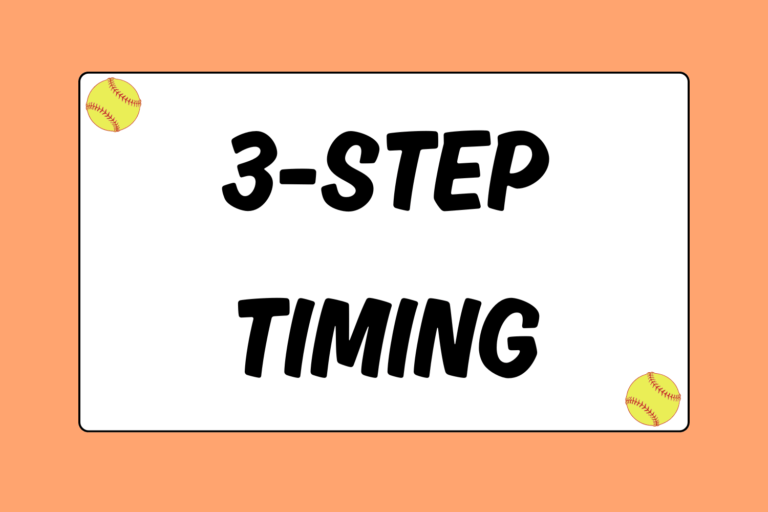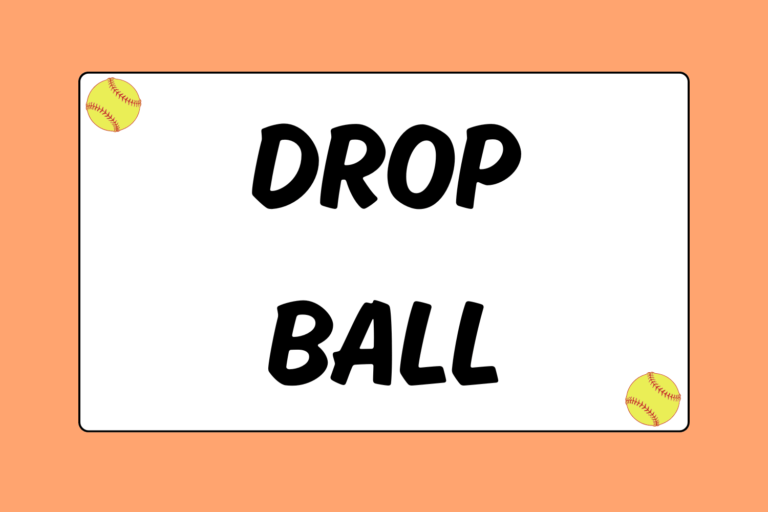The foundation of softball’s slap and hit, commonly referred to as slapping, is the footwork. Without a strong base, no slapper will ever be successful.
Of course, it’s not just the footwork that makes you a successful slapper. There are a few more determining factors — speed being the most important. As a slapper, your feet start your motion, and your feet carry you through the box.
This guide focuses solely on footwork to teach you the basic three-step approach to slapping. Master it, and you’ll be well on your way to a golden offensive career.
For more determining factors on what it takes to be a slapper, check out our guide, How to Decide Who Can Become Slappers.
Step Back, Step Over, the Front Leg Follows
If you’ve watched college softball or any National Pro Fastpitch game, you may have noticed that most slappers use the three-step footwork. Here is the proper technique:
- Stand in the left side of the batter’s box. Set up as if you were a hitter: Your feet should be more than shoulder-width apart, and you should be in a comfortable stance. Keep a slight bend in your knees and stay light on the balls of your feet. Your hands should be high and ready. Keep your weight balanced or shifted slightly to your back leg — many slappers tend to start with their weight shifted back.
- As the pitch comes in, your front leg will take a slight step (no more than a foot) back towards the catcher. Step in line with or slightly behind the plane of your back leg. This step is your timing mechanism and is the negative movement of the slap.
- As your front foot is stepping backwards, your upper body’s momentum should start to go forward (though you are not moving). Your upper body will naturally start to shift forward while most of your bodyweight shifts to your front leg. If it feels unbalanced, that’s okay — it should.
- Now, step your back foot over and across your front foot. This step is much wider than your step back. Basically, this step should be wide enough that you’re still well-balanced even though your legs are crossed over.
- As your back foot lands, your front foot follows suite and comes forward from behind your back leg. After your front foot follows through, your legs should be as wide apart as they would be in a strong hitting stance.
- Your toes should always point towards the plate. The motion is fluid. It should not be jerky or hesitant — one, fluid movement. Also, understand that this footwork is quick. You will never have time to walk through the batter’s box.
Hot Tip: Practice along a Straight Line
A great way to practice the footwork and really embed it into muscle memory is to practice along a straight line. The easiest way is to go to a softball field.
Stand on a baseline and practice the footwork all the way to the fence, and then practice it on the way back. Do this for 15 minutes a day for a week, and the basics of the footwork should become established into your muscle memory.
Visualize the Footwork
To help practice your footwork and get a mental image of where you want to make contact with the ball (at your back hip), you need to be able to visualize the three-step approach. Using masking tape, draw a sideways arrow on the floor to use as your footwork guide. Don’t draw the arrow haphazardly; make it precise by following these steps:
- Set up in your hitting stance, and then place the tape from toe-to-toe. The tip of the arrowhead will be at your front foot.
- Next, take the slight step back with your front foot. Mark the spot where your front foot lands along the length of the arrow with a piece of tape. Use this spot as the base of your arrowhead (like the base of a triangle).
- Now complete the arrowhead with two pieces of tape, placed diagonally from the tip of the arrowhead to its base.
Now, place your feet on the arrow. Take your first step back, then step forward. Look! You are perfectly positioned so that the far point of the arrowhead base is at your back hip — exactly where you hit the ball in a slap. Place a tee right there and get some practice!
She’s Safe!
The slapper’s duty is to create havoc for the infield. Because she is essentially running when she makes contact and she is on the left side of the batter’s box, she’s that much closer to first base upon contact. The infield will automatically feel a heavy sense of pressure when they field her slap. This pressure will be based on one thing: Speed. Fielding the ball cleanly and making an accurate throw in less than three seconds is extremely difficult for defenses — thus, the beautiful opportunities slapping creates for hitters.
Have fun with this! Remember, slapping is a process. You won’t learn it in a day, a week, or even a month. The best thing to do is practice, and it starts with the correct footwork!
For the alternative footwork approach to slapping, check out our guide, The Two-Step Footwork for Slapping.





